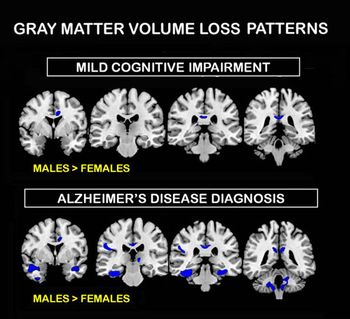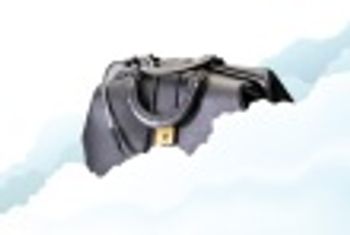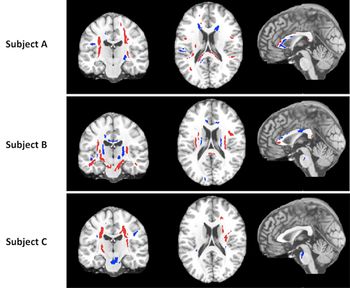
CHICAGO - Brain maps created with multiple MRIs reveal that Alzheimer’s disease affects men and women’s brains differently.

CHICAGO - Brain maps created with multiple MRIs reveal that Alzheimer’s disease affects men and women’s brains differently.

CHICAGO - Radiology is woefully behind the times in its use of informatics, said Paul Chang, MD, who detailed how systems can improve efficiency and accuracy.

CHICAGO - Are you getting the most out your speech recognition software? Here are tips for training the tool to record dictations with fewer errors.

Infinitt and Intelerad rose to the top among PACS vendors who offer timely upgrades and expanded usability, according to a KLAS report released at RSNA 2012.

Changes in tumor enhancement detected by post-gadolinium (Gd) T1-weighted MRI are highly predictive of which patients with recurrent glioblastoma brain tumors will benefit from second-line therapy.

CHICAGO - Cloud-based image sharing and storage could be the new standard if the industry can work out standardization, privacy and security concerns.

CHICAGO - Radiology needs new strong leaders to strengthen the profession, and residents’ training must begin now to fill the void in the industry.

CHICAGO - Disclosing errors in radiology doesn’t have to be traumatic. Here are some pointers for surviving the disclosure process.

CHICAGO - The brain’s ability to compensate for a traumatic injury could result in a new treatment approach, encouraging the brain to heal itself.

CHICAGO - The opening session of RSNA 2012 was a call to arms urging radiologists to focus on patients. If they don't, radiology could be in danger.

Agfa Healthcare will launch at RSNA 2012 its digital DX-D 400 DR solution marketed as an economical solution for all digital radiography applications.

Maxant will debut at RSNA 2012 a dual-format medical image viewing display system to allow providers to view digital and analog images side-by-side.

Digital imaging solutions provider Viztek will debut at RSNA 2012 a new RIS that is certified for the federal meaningful use incentives program.

Merge will unveil at RSNA 2012 a mobile and online platform that will allow patients to select a radiologist, schedule appointments and receive results.

lifeIMAGE will debut a service allowing physicians, patients and hospitals to create profiles to securely exchange medical information.

Carestream will show at RSNA 2012 its smaller-format DRX detector as a works in progress, designed for pediatric, orthopedic and general radiology exams.

SourceHOV will unveil at RSNA 2012 an X-Ray Preservation Program for legacy X-ray images requiring long-term retention.

TeraMedica plans to debut at RSNA 2012 its next generation Evercore VNA Control Center, a streamlined interface for the vendor-neutral archive.

Advanced visualization software developer Claron Technology will debut at RSNA 2012 enhancements to their “No Install” cloud-based viewers.

peerVue will unveil at RSNA 2012 several new solutions aimed at helping radiologists streamline their workflow.

Intelerad Medical Systems will be launching a few new products aimed at improving workflow, image sharing and security.

Medical networking company ETIAM plans to introduce at RSNA 2012 a Web-based universal image viewer.

CHICAGO - A common area where radiology practices can get into fraud trouble is in taking too much discretion when interpreting the order from a referring physician, according to Richard Duszak, MD, FACR.

CHICAGO - If you make a mistake, should you tell the patient or does that open you up to a malpractice suit? The rules seem to be changing – a little – according to a malpractice and medical error panel discussion at RSNA 2011.

CHICAGO - Richard Morin, co-chair of the ACR Dose Index Registry Committee, interviewed at RSNA 2011, explains how radiologists can compare their dose practices with others, to give the metrics more meaning.

CHICAGO - In this interview, the CMIO at Southwest Diagnostic Imaging discusses the process his practice followed to qualify for meaningful use, where they stand now, and whether the work has been worth it.

CHICAGO - As the number of CT scans done in the US has climbed, so has the number of incidental findings - and the related malpractice risks for radiologists. Leonard Berlin, MD, in an interview on malpractice risk at RSNA 2011, says the right path isn't clear.

CHICAGO - Arl Van Moore, Jr., MD, in an interview at RSNA 2011, discusses what it takes to be successful in radiology.

CHICAGO - There’s too much misinformation circling about meaningful use, said Khan Siddiqui, speaking at RSNA 2011.

CHICAGO - Low-dose remained a top concern at RSNA 2011. James Brink, MD, co-chair of the Image Wisely Joint Task Force, announced that over 10,000 have taken the Image Wisely pledge. The effort to raise awareness asks radiologists to optimize the use of radiation when imaging patients.